
People spreading misinformation often seek to undermine science by pointing to its historical mistakes. Look, they say, Science once said smoking was good for you! Science said DDT was a safe way to kill flies! Science said asbestos was a good building material!
Of course Science never said any such thing.
Because Science isn’t a person.
Science is the consensus of a community of scientists based on evidence. It’s a picture that emerges as research and analyses are done over time. When enough convincing evidence emerged the vast majority of scientists agreed that smoking, DDT and asbestos were harmful.
What, every scientist in the world?
Yes, there were a few scientists who said otherwise.
There are also scientists alive today who claim that the world was made in 6 days just like the Bible says. Scientists are people and people can get things wrong.
Just as recently a few scientists got their fifteen minutes of social media fame by denying the existence of climate change or COVID-19.
Why would a scientist make a claim that most of their peers conclude is untrue?
Sometimes it’s for personal gain. They might be a researcher-for-hire who produces reports favourable to those supplying the funding. The tobacco industry made good use of researchers who were, um, morally flexible.
Sometimes it’s for attention. The doctors who stood up to say that the COVID-19 pandemic was a hoax got their faces seen by millions. Useful when selling a book or getting on fringe lecture circuits.
No surprises there. Scientists are just people who have gone through the right academic training. Liars, charlatans and mercenaries are as able to sit exams as anyone.
More troubling in the history of science was when great harm was done in the name of belief.
Well what do scientists believe?
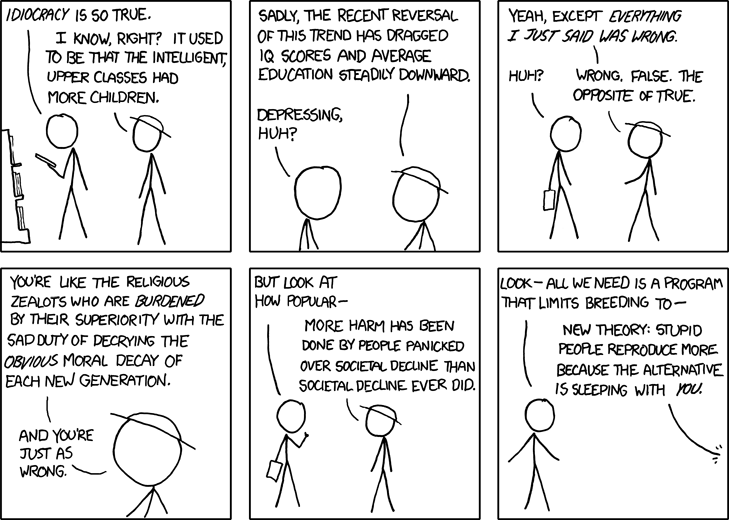
Scientists believe in the same things as everyone else. There are Christian scientists, atheist scientists, communist scientists, free market scientists. There are probably even some Jedi Knight scientists out there.
And that’s okay. As long as the science comes before the belief.
You’ll remember that the scientific method is based on gathering evidence through rigorous experiments and then drawing conclusions.
The opposite approach is to start with a belief and then go looking for evidence to back it up.
A case in point would be how Soviet Russia reacted to Darwin’s theory of natural selection.
Consider, for instance, the length of a giraffe’s neck. According to Darwin, giraffes with long necks could reach more leaves and so they survived and thus reproduced more. They passed on their genes to future generations while giraffes with shorter necks died out.
To the Soviets, this smelled too much like ruthless capitalism where the winner takes all. So instead they adopted another theory of evolution which claimed that giraffes have long necks…because their ancestors often stretched for the higher leaves!
This painted a picture where life was all about meeting social needs which fitted with the communist ideology of the day.
Scientists who pointed out that it was total nonsense were sent to the gulag.
In non-totalitarian countries, bad science gets rooted out over time but there were eras when prejudice was more influential than reason. We’ll take a brief look at four main areas of bias, some of which persist to this day: racism, sexism, speciesism and mental health.
But it’s not racist to study race, is it?
There’s no such thing as race.
We quite confidently speak about whites, African-Americans, Latinos, Asians – and while these identities might well carry their own cultural and social baggage, on the biological level they’re essentially nonsense.
All humans are 99.9% alike genetically and things like colour of skin and type of hair represent superficial differences. It’s true that we all have different ancestries and that might show relevant differences like increased immunity to certain diseases or intolerance of certain food products.
But it’s been demonstrated that two European people might have more in common genetically with someone from Asia than they have with each other.

Humans, however, are notoriously vulnerable to superficial differences and we’ve used them to assert cultural superiority for time immemorial. Everyone from the Romans to the Chinese designated everyone living outside of their Empire as Barbarians.
So it was perhaps predictable that in the 20th century science would be misused to provide some theoretical basis for racial prejudice.
Eugenics refers to the belief that a ‘race’ of humans can be improved upon by excluding ‘inferior’ elements. Darwin’s Theory of Natural Selection rocked the world when it came out but there were those who eagerly seized upon a scientific law to justify oppression and even genocide.
Thus in the early 20th century it became fashionable and for a while in the UK, the US, Canada and much of Europe, there were programs to ‘improve’ the genetic stock of the population.
How?
Well, among other measures, they singled out people with mental illness, those who scored low on IQ tests, criminals and people belonging to minority ethnic groups. Sometimes these people weren’t allowed to marry and in some cases they were forcefully sterilised.
Things reached a head, of course, with the eugenic program of the Nazis in Germany who claimed they could protect the ‘purity’ of their race by simply eliminating from the human gene pool entire ethnicities.
Everyone knows about the Nazis! What about sexism then?
The story of how women have been treated in civilised societies is perhaps even more shameful than that of ethnic genocide. It was, of course, never possible to systematically eliminate women – every society depended on them for their survival – but they’ve universally been made to suffer violence, oppression, drudgery and injustice on an almost unimaginable scale.
Aristotle declared women to be a kind of ‘deformed male’ but similar attitudes are to be found across the world in all patriarchal societies. Women have consistently been judged less intelligent, less moral, less worthy than men over the ages.
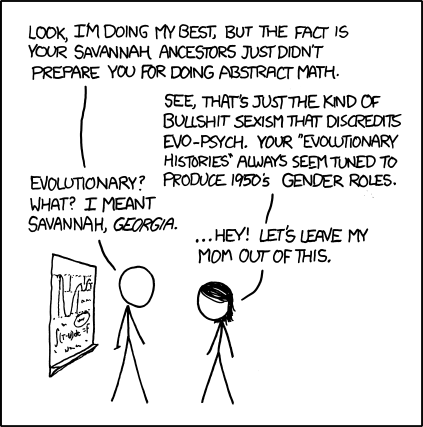
Science can hardly be blamed for this state of affairs but it hardly helped either. In the 19th century, hysteria was the name given for a condition affecting women. What were the symptoms? Irritability, anxiety, sleeplessness, lack of interest in sex, too much interest in sex…and generally not knowing her place.
Over a century later and women still have to wait longer to get accurate diagnoses for many conditions as it’s still assumed by many doctors that their illness is all in their heads. They’re less likely to be given pain killers in hospital and have to wait longer than men to get them.
Part of the reason for this is the lingering notion that women are well, just a bit hysterical when it comes to health.
For instance, while race is a fiction, gender is not. Women’s bodies do, rather evidently, have significant differences than men’s. Yet medical research into the critical conditions like cancer and heart disease has consistently focused on how they affect men.
Until the early 90’s, women often weren’t even been included in the trials. Landmark papers were published based on research trials featuring thousands of men and not a single woman.
That’s also true in research done on animals and even on cells where only male animals and cells from men were analysed.
In medicine trials the justification was that women’s reproductive cycles messed up the data. Besides, women carry all the reproductive eggs they will ever use and the drugs might harm them.
A point of view that makes sense if you consider women as birth machines.
And, in any case, if the new drugs might harm women’s chances of having a healthy baby, isn’t that something we should know before going to market?
So what about animals?
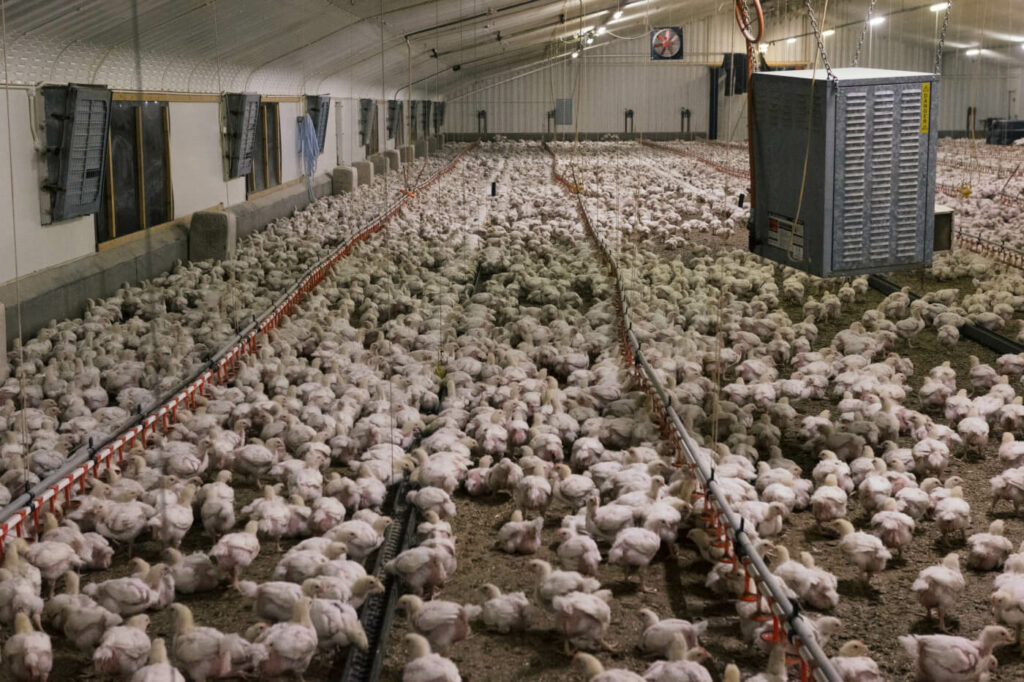
When we talk about the mistreatment of animals by science we tend to think of cruel things done to mice, guinea pigs and dogs to give us better cosmetics.
But that pales in comparison to factory farming.
The pigs and cows and chickens which give us our bacon and burgers and nuggets live brief and agonising lives in conditions that only be compared to medieval notions of hell.
I don’t really have the stomach to go into detail but if you have any doubt just watch a video from PETA on Youtube.
What moral burden does science bear for any of this?
Firstly, science makes industrial livestock farming possible. In such festering conditions the animals are given copious antibiotics so they don’t die before we kill them. Science also provides the hormones injected into animals to make them grow faster.
And, in the case of turkeys, for example, which have been bred to the point that they’re unable to reproduce on their own (could Darwin ever have imagined that?), science makes the artificial insemination possible to produce the next generation destined for our freezers.
But it’s not just that science enabled the torture of more than half the mammals on Earth, it’s that it once gave humans the moral authority to do so.
The only reason that we treat animals so abysmally is that we think they’re worth less than humans.
And the only reason that we think they’re worth less than humans is we don’t believe that they feel and think like we do. For a long time it was thought that to be be a sentient creature meant to have language.
After all, if pigs could make small talk we’d probably find it rather harder to eat bacon.
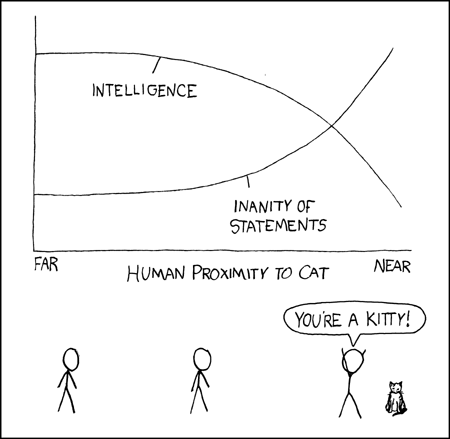
While Darwin saw reason to think that many animals might also be intelligent, sentient creatures due to their similarities with humans, the prevailing view for much of the 20th century was that they were simply mindless learning machines.
Modern science has since then demonstrated animals are far more intelligent than we ever supposed. There are crows who understand analogies. Chimps that can beat human memory champions. Fish that use tools.
We also fell into the trap of measuring animal intelligence by comparing it to human intelligence.
But if we were to apply the reverse principle?
Dogs would consider us total idiots for our ability to recognize scents…
And mental health? In India they say to be crazy is to be ‘intoxicated with God!
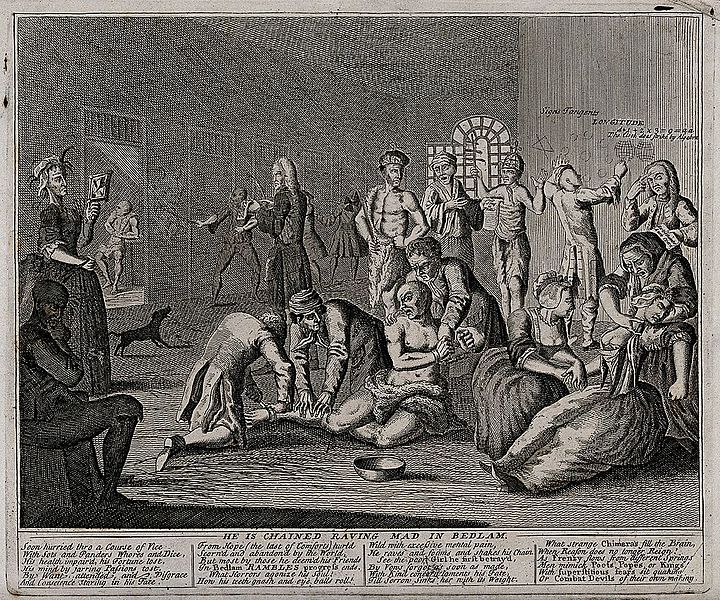
The past was really a bad time to be mentally ill.
For much of human history it was simply assumed that you were possessed by evil spirits or the Devil himself. Or else madness was a punishment from God for your sins.
In the 19th century, insane asylums became a flourishing trade in Europe and families could pay to have their relatives confined. But there was also good money in building asylums for the poor as the local authorities paid the fees.
Conditions were generally awful. Private patients of rich families might get a room with a view but the poor inmates were largely locked up and forgotten about.
By the 20th century, psychiatry was born and mental disorders began to be identified and classified with breathtaking hubris. Psychiatrists helped identify 200,000 mentally ill people to be murdered by the Nazis, for instance.
The 20th century was also when lobotomy came into fashion. How do you go about cutting a bit of the brain? One of the most prominent lobotomists stuck an ice pick through the eye socket of a patient and wiggled it around.
Some 50,000 patients were lobotomised in North America and many tens of thousands more in Europe but most were women. Even though most inmates in asylums were men. In North America, there were also a disproportionate number of African-Americans who suffered lobotomy. It was thought to make them ‘calmer’ and less of a threat.
And this was and is the problem at the heart of psychiatry: what is normal anyway?
In the 19th century, black slaves in the US were considered to be mentally ill for wanting to escape.
Lobotomy also made women more docile and compliant, values expected of them in the 1950’s.
But when lobotomy fell out of medical favour, doctors began instead to overwhelmingly prescribe valium to women, a tranquiliser which helped tolerate their lives looking after the house and raising the children.
Mental illness is real. And the acceptance and treatment of it has made life more bearable for millions of people suffering from it.
It may well be though that we over-diagnose and medicate as a matter of course now.
Kids with ADHD may have trouble concentrating but who is to say that sitting down at a desk for 6 or 7 hours a day is a reasonable thing to ask of a child?
Is that it?
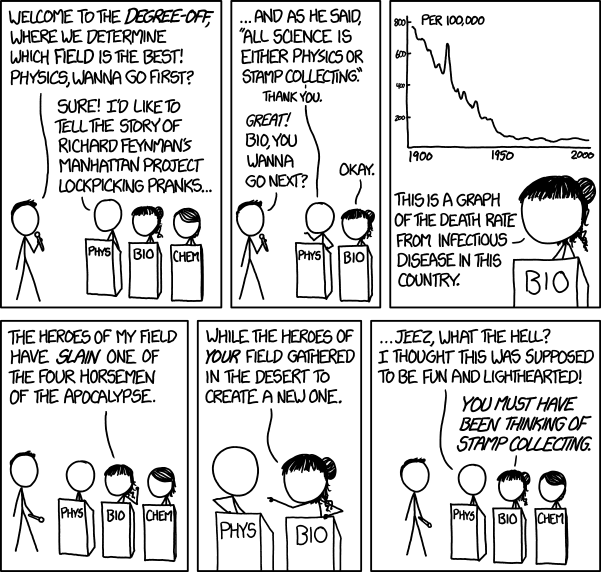
Science is a tool. And just like any tool it can be misused.
Science enabled chemical, biological and nuclear weapons.
Science gave us the means to extract en masse the fossil fuels lying under the Earth and turn our skies into a giant greenhouse.
But it also has the power to save lives, to protect the Earth and help us understand – and appreciate – the world we live in. And that makes up for a multitude of sins.
Further reading:
https://www.theatlantic.com/education/archive/2015/02/what-animals-teach-us-about-measuring-intelligence/386330/ – on the differences between human and animal intelligence
https://www.ncbi.nlm.nih.gov/pmc/articles/PMC5962395/ – on how women were failed by psychiatry
https://science.sciencemag.org/content/294/5540/59 – on how eugenics is a hard idea to kill

